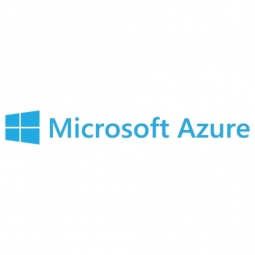Download PDF
AkzoNobel: Revolutionizing Color Prediction with IoT
Technology Category
- Analytics & Modeling - Machine Learning
- Analytics & Modeling - Predictive Analytics
Applicable Industries
- Education
- Equipment & Machinery
Applicable Functions
- Product Research & Development
- Quality Assurance
Use Cases
- Predictive Maintenance
- Time Sensitive Networking
Services
- Data Science Services
- Testing & Certification
The Challenge
AkzoNobel, a Dutch paint and coatings company, has been at the forefront of color matching for two centuries. However, the company faced challenges in keeping up with the rapidly evolving color trends in industries like automotive and interior decor. The traditional method of color prediction, which involved complex mathematical models, was no longer efficient or innovative. The paint industry was under immense pressure as new colors emerged daily, and manufacturers constantly sought new finishes to gain a competitive edge. AkzoNobel's color prediction process, which involved deciphering multiple physical elements influencing color, was complex and time-consuming. The company needed to innovate and adapt to meet the modern demands and expectations of its customers.
About The Customer
AkzoNobel is a leading Dutch paint and coatings company that operates in more than 150 countries and employs approximately 34,500 people. The company owns popular brands like Dulux and Sikkens and has a rich heritage of over 200 years. AkzoNobel has always been at the forefront of color trends, with a dedicated team of scientists working to adjust, recalibrate, and tweak colors to meet the latest trends in various industries. The company prides itself on its commitment to innovation and exceeding customer expectations. AkzoNobel's key to success lies in its ability to adapt and innovate, constantly seeking new ways to meet the evolving demands of the market.
The Solution
AkzoNobel turned to machine learning technology and AI, powered by Microsoft Azure, to revolutionize its color prediction process. The introduction of Azure Machine Learning transformed the core process of color prediction, extending it with new technology. Instead of relying solely on physical models, the company could now make calculations based on deep learning models. This technology enabled AkzoNobel to create more color recipes, more accurately, and in less time. The transition to the new technology was seamless, with lab technicians and scientists using the same process and software tools, but with smarter calculations and fewer rounds of tests. The machine learning models were easy to deploy with the help of partner Machine2Learn, and the platform as a service (PaaS) capabilities of Azure increased operational simplicity, allowing AkzoNobel to scale up or down as needed.
Operational Impact
Quantitative Benefit
Related Case Studies.

Case Study
Smart Water Filtration Systems
Before working with Ayla Networks, Ozner was already using cloud connectivity to identify and solve water-filtration system malfunctions as well as to monitor filter cartridges for replacements.But, in June 2015, Ozner executives talked with Ayla about how the company might further improve its water systems with IoT technology. They liked what they heard from Ayla, but the executives needed to be sure that Ayla’s Agile IoT Platform provided the security and reliability Ozner required.

Case Study
IoT enabled Fleet Management with MindSphere
In view of growing competition, Gämmerler had a strong need to remain competitive via process optimization, reliability and gentle handling of printed products, even at highest press speeds. In addition, a digitalization initiative also included developing a key differentiation via data-driven services offers.

Case Study
Predictive Maintenance for Industrial Chillers
For global leaders in the industrial chiller manufacturing, reliability of the entire production process is of the utmost importance. Chillers are refrigeration systems that produce ice water to provide cooling for a process or industrial application. One of those leaders sought a way to respond to asset performance issues, even before they occur. The intelligence to guarantee maximum reliability of cooling devices is embedded (pre-alarming). A pre-alarming phase means that the cooling device still works, but symptoms may appear, telling manufacturers that a failure is likely to occur in the near future. Chillers who are not internet connected at that moment, provide little insight in this pre-alarming phase.

Case Study
Premium Appliance Producer Innovates with Internet of Everything
Sub-Zero faced the largest product launch in the company’s history:It wanted to launch 60 new products as scheduled while simultaneously opening a new “greenfield” production facility, yet still adhering to stringent quality requirements and manage issues from new supply-chain partners. A the same time, it wanted to increase staff productivity time and collaboration while reducing travel and costs.

Case Study
Integration of PLC with IoT for Bosch Rexroth
The application arises from the need to monitor and anticipate the problems of one or more machines managed by a PLC. These problems, often resulting from the accumulation over time of small discrepancies, require, when they occur, ex post technical operations maintenance.

Case Study
Robot Saves Money and Time for US Custom Molding Company
Injection Technology (Itech) is a custom molder for a variety of clients that require precision plastic parts for such products as electric meter covers, dental appliance cases and spools. With 95 employees operating 23 molding machines in a 30,000 square foot plant, Itech wanted to reduce man hours and increase efficiency.





